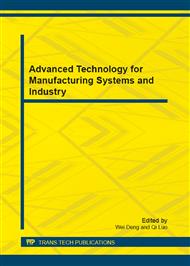p.484
p.488
p.493
p.497
p.503
p.509
p.515
p.521
p.526
Effect of Instrument Precision on Area Quality Measurement Used in Digital Printing Quality Assessment
Abstract:
In this study the effect on quality measurement introduced by input precision of instrument in image digitizing process was verified through a series experiment. Two categories of samples, which were outputted by EPSON Stylus Pro7880c digital inkjet printer and Xerox DocuColor5000 digital xerographic printer individually, were transformed into digital image with a normal flatbed scanner in 600 DPI, 1200 DPI and 1600DPI resolution. The area quality attributes such as graininess, mottle, NPS and banding were surveyed and analyzed with the aid of PIAS™-II personal image analysis software to investigate the stability of normal instrument used in digital prints measurement system. Results show that precision demands are different for various quality parameters and different application backgrounds, namely it is precise enough for common industry detection which has lager tolerance, but higher resolution does good to more effective and more precise measurement especially in R&D.
Info:
Periodical:
Pages:
503-508
Citation:
Online since:
November 2012
Authors:
Price:
Сopyright:
© 2012 Trans Tech Publications Ltd. All Rights Reserved
Share:
Citation:


